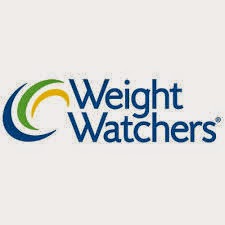In recent blogs, I reviewed the treatment approach for primary prevention, and for people with a statin indicated condition (excluding those with established CV disease).
Today, let’s focus on TREATMENT APPROACH FOR PEOPLE WITH ESTABLISHED ATHEROSCLEROTIC VASCULAR DISEASE.
Please refer to figure 2 (pg 38) and figure 3 (pg 39) of the Guidelines as we walk through some of the highlights!
People with atherosclerotic cardiovascular disease include:
- history of myocardial infarction (heart attack) or acute coronary syndrome
- stable angina, documented coronary artery disease by angiography
- stroke, TIA (mini stroke), documented carotid artery disease
- peripheral artery disease, claudication and/or ankle brachial index <0.9
- abdominal aortic aneurysm (AAA) >3cm or prior aortic aneurysm surgery
Treatment: There are 3 fairly straightforward steps to take in optimizing lipid levels in people with CV disease:
- Statin;
- Consideration of second line medication(s) if not at target on statin; and
- Consideration of icosapent ethyl (in parallel with #2).
First line: statin.
- Recommendation: high intensity statin therapy is recommended in addition to appropriate health behavior modifications for all secondary prevention CVD patients. For patients who do not tolerate a high-intensity statin, we recommend the maximally tolerated statin.
Second line: Additional treatment is recommended if LDL is ≥1.8mmol/L (or ApoB ≥0.7 g/L, or nonHDL ≥2.4 mmol/L) on maximally tolerated statin. Ezetimibe and PCSK9 inhibitors are the recommended choices, either alone or in combination. Which one to choose first, and whether to use both, comes down to consideration of several factors, including who will benefit most from PCSK9 inhibitors, and insurance coverage/cost. The algorithm suggests that if LDL is higher (>2.2 mmol/L), PCSK9 inhibitors may be considered first (as greater LDL lowering is needed); if LDL is 1.8-2.2 mmol/L, one might choose ezetimibe first, as less LDL lowering is needed to get to target.
- Recommendation: PCSK9 inhibitor (evolocumab (Repatha) or alirocumab (Praluent)) – with or without the addition of ezetimibe – is recommended for secondary prevention patients shown to derive the largest benefit from PCSK9 inhibitor therapy with cholesterol levels as above. (see Table 3, pg 36 for those who enjoy the greatest benefit from PSCK9 inhibitors)
- Recommendation: ezetimibe and/or PCSK9 inhibitor for all secondary prevention patients with cholesterol levels as above. If ezetimibe is used initially and LDL remains ≥1.8 mmol/L, PCSK9 inhibitor is recommended.
- Note: there is no evidence to suggest that any LDL level is ‘too low’.
In parallel: if triglycerides are 1.5-5.6 mmol/L on maximally tolerated statin therapy:
We now have a new kid on the block (available in Canada since early 2020), called icosapent ethyl (trade name Vascepa). This medication was shown to powerfully reduce CV risk in the REDUCE-IT trial, which included people with established CVD (see my prior blog for much more on this). Icosapent ethyl is a highly purified ethyl ester of the omega-3 fatty acid EPA. These benefits have NOT been shown in extensive studies of over the counter omega 3 supplements.
- Recommendation: icosapent ethyl should be used in people with CVD, with elevated fasting triglyceride level of 1.5-5.6mmol/L despite treatment with maximally tolerated statin therapy, to lower CV risk.
- Recommendation: do NOT use over the counter omega 3 polyunsaturated fatty acid supplements to reduce CV risk, as these supplements do not reduce CV risk.
This concludes my 3-part review of the new lipid guidelines. I hope you’ve enjoyed!
Disclaimer: I receive honoraria as a continuing medical education speaker and consultant from the makers of icosapent ethyl (HLS Therapeutics). I have been involved as an investigator in clinical trials of PCSK9 inhibitors.
Share this blog post using your favorite social media link below!
Follow me on twitter! @drsuepedersen
www.drsue.ca © 2021











